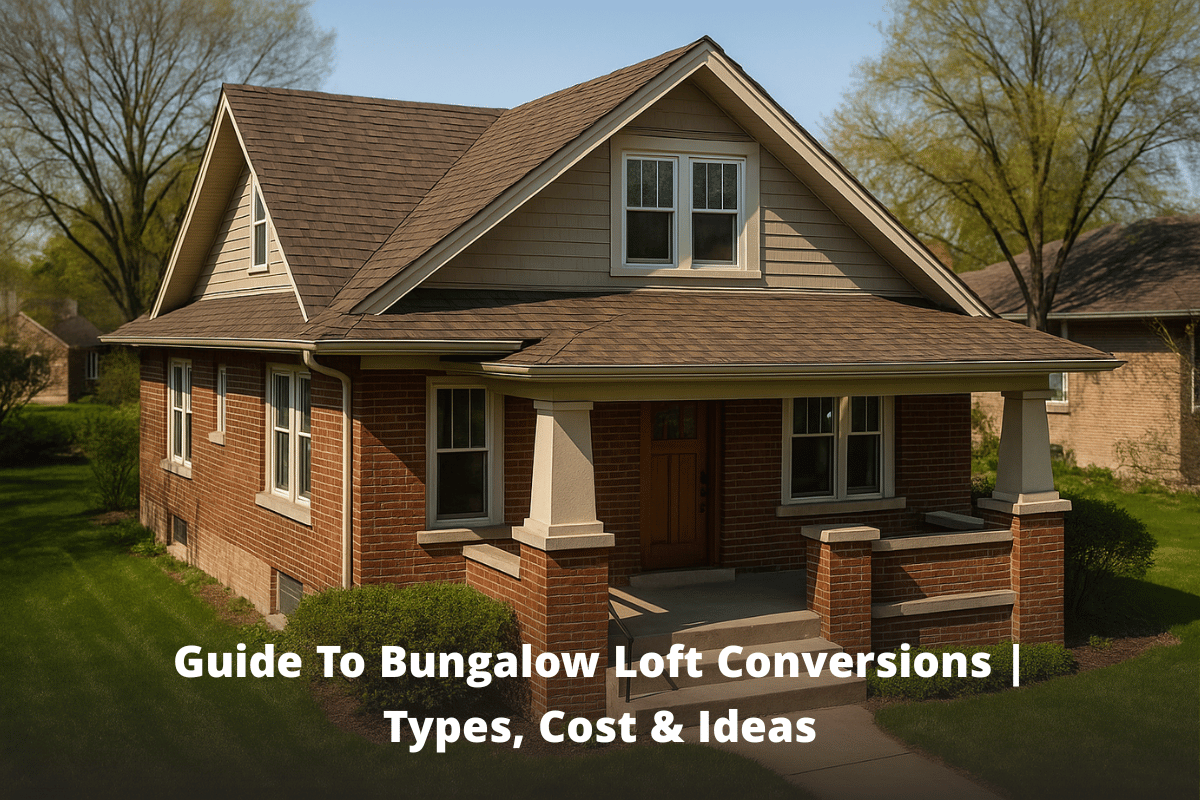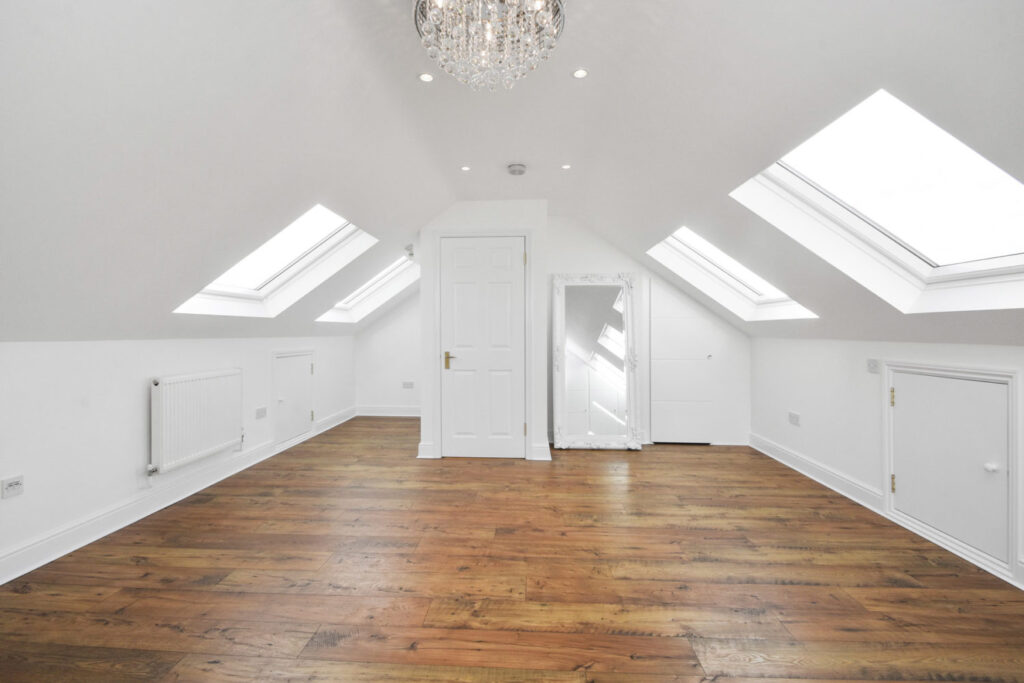
Dark attics, your days are numbered. Transforming forgotten spaces into luminous havens with smart loft conversion lighting is as easy as flipping a switch.
No more shadowy corners or dim, lifeless rooms.
We’ll unpack lighting strategies that turn awkward angles into brilliant, functional spaces – from cosy bedrooms to buzzing home offices.
Key Summary
- Strategic lighting transforms lofts from dark, unused spaces into functional, valuable rooms.
- Skylights and smart LED solutions maximise natural and artificial light in compact areas.
- Layered lighting (ambient, task, accent) creates versatile spaces for bedrooms, offices, and playrooms.
- LED lighting offers long-term energy efficiency and can boost property value significantly.
Lighting for Different Loft Purposes
Converting your loft is a fantastic way to add space and value to your home. But without the right lighting, your beautifully converted loft can feel dark and unwelcoming.
Whether it’s a cosy bedroom, a productive home office, or a fun playroom, here are some loft conversion lighting ideas that work for every purpose, style, and budget.
1. Loft Bedroom Lighting Ideas
When your loft is a bedroom, lighting should create a calm and relaxing environment. Install dimmable ceiling lights to adjust the brightness to your mood.
Add bedside lamps with soft light for nighttime reading. Remember that wall-mounted options save space if your loft is small.
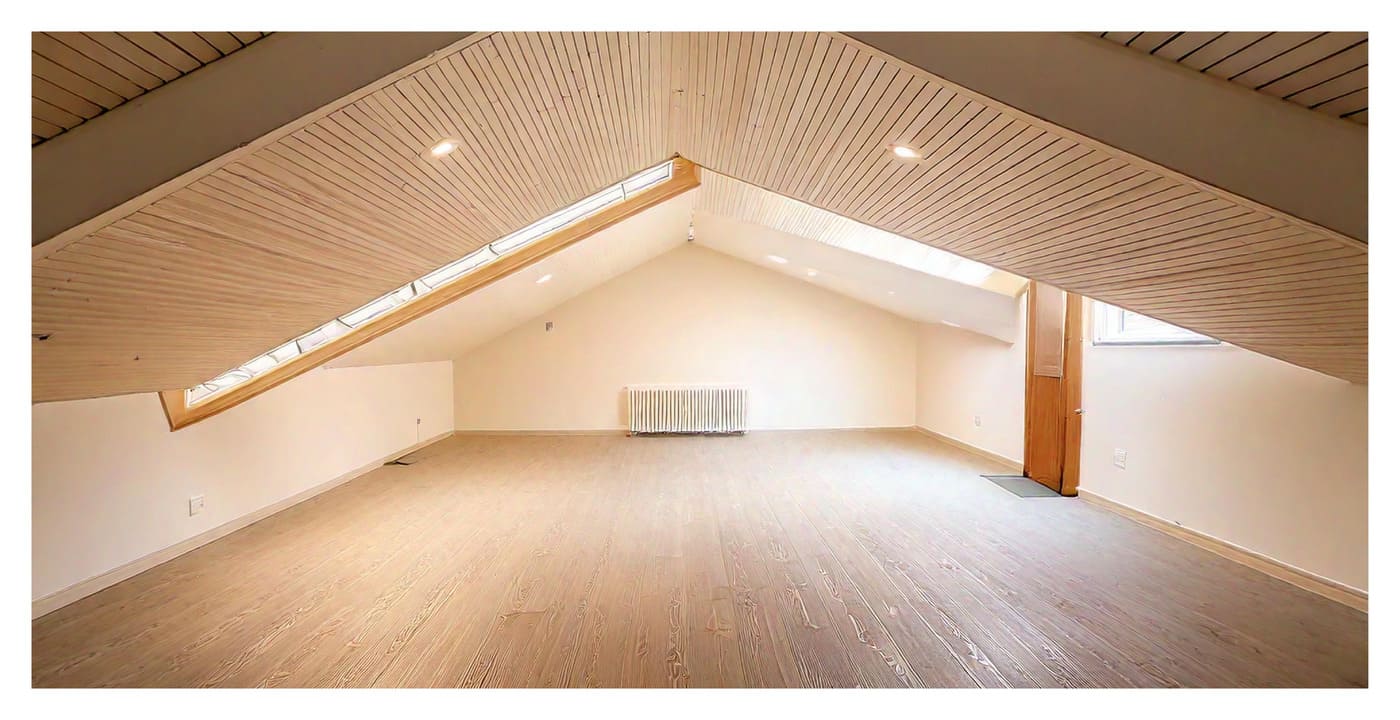
2. Home Office Lighting
For a home office, task lighting takes centre stage. Adjustable desk lamps or angled wall lights help focus on your work without straining your eyes.
Pair these with bright ambient lighting for balance. Ceiling-mounted fixtures work wonders here.
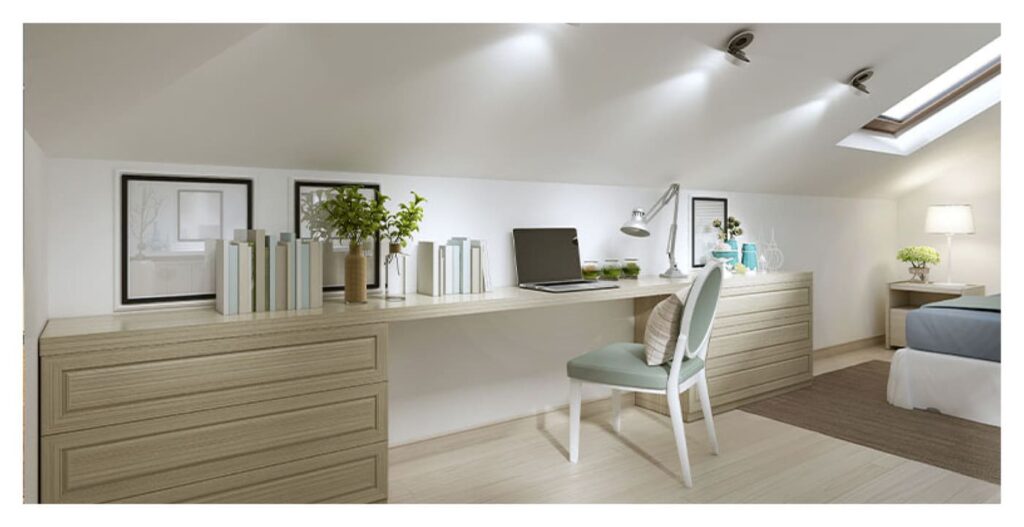
3. Playroom Lighting
Kids’ playrooms thrive on soft, even lighting. LED strips under shelves or around play areas bring energy and safety into the space.
Consider colourful accent lighting to add fun without overwhelming the eyes.
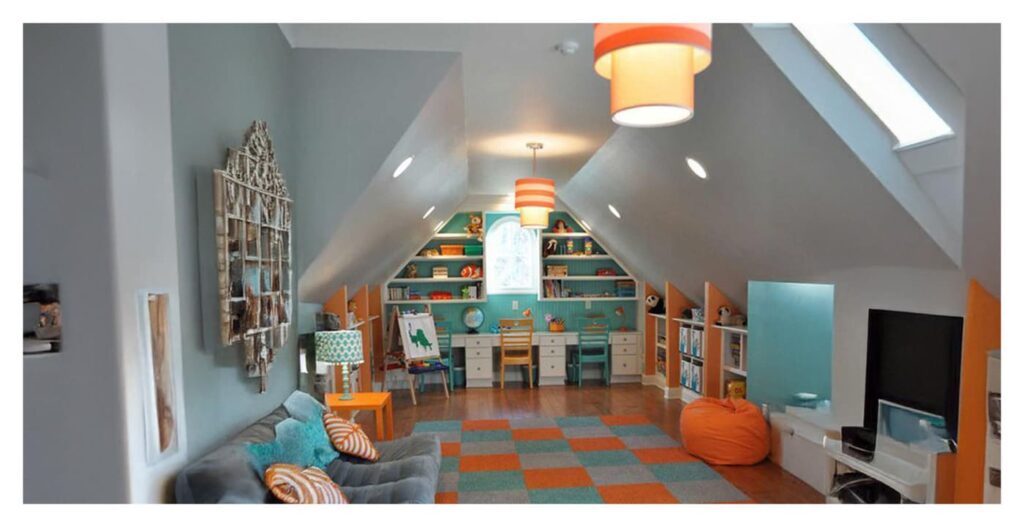
Maximising Natural Light
Natural light is the easiest design trick to make your loft feel brighter and bigger. Skylights and roof windows are unbeatable options.
Place them strategically to catch sunlight during the day – ideally on south-facing sections for maximum exposure.
Dormer windows not only flood your loft with light but also add extra headroom.
Mirrors amplify natural light like magic. Position them to reflect sunlight into darker corners. A large mirror on a wall opposite a window works especially well for compact lofts.
Types of Loft Lighting
From soft and warm to elaborate chandeliers, there’s plenty to choose from when it comes to loft conversion lighting.
1. Ambient Lighting
This is your base layer of light. It fills the room and eliminates shadows.
Options like recessed spotlights or flush-mounted ceiling lights are practical choices for lofts with low ceilings.
2. Task Lighting
Every loft has specific tasks. Reading, working, or even applying makeup needs focused lighting.
Go for adjustable wall-mounted lights or stylish desk lamps to target light exactly where it’s needed.
4. Accent Lighting
Highlight architectural features, like beams or sloping ceilings, with track lights or LED strips. These bring depth and character to your loft without overwhelming the space.
Layer lighting to avoid a flat, uninviting space. Combine ambient, task, and accent lighting to achieve balance and functionality in any room.
5. Decorative Lighting
Chandeliers and pendant lights aren’t only for grand rooms. Choose compact, modern designs that fit your loft’s dimensions. They add personality without compromising functionality.
Pro Tip: Use light-coloured flooring and furniture in your loft to bounce light around the room and enhance brightness, especially in spaces with limited natural light.
Structural Features and Lighting Placement
Your loft’s structural quirks – beams, eaves, and sloped ceilings – can complicate lighting placement.
Use uplights to emphasize beams or hide recessed lights within eaves for a sleek look. Sloping ceilings benefit from wall-mounted fixtures that shine upward, giving the illusion of height.
Position lighting to avoid dark corners. Think about where you’ll need the most light – a desk, bed, or storage area – and plan your fixtures accordingly.
Wiring plays a role here too. Running cables through beams or around awkward corners can get tricky, so think practically.
Energy Efficiency Considerations
LED lighting is the way forward. It’s energy-efficient, long-lasting, and doesn’t overheat. Yes, they cost a little more upfront, but you’ll save money on electricity in the long run.
Smart lighting takes efficiency a step further. Install bulbs you control with your phone or voice assistants. Adjust brightness or schedule lights to turn on only when needed – perfect for cutting energy use in seldom-used lofts.
Practical Considerations
Beyond elevating your loft, there are a few nuts and bolts to consider when thinking about attic lighting ideas:
1. Loft Wiring Regulations in the UK
Electrical work in loft conversions must comply with UK building regulations. That means hiring a certified electrician to handle wiring.
Regulations ensure safety and proper installation, so cutting corners here isn’t worth the risk.
2. How Much for an Electrician to Install a Loft Light?
Expect to pay anywhere from £50 to £150 per light for an electrician, depending on the complexity of the work.
If you’re installing multiple fixtures or need new wiring, costs rise. Always get quotes from professionals before starting work.
3. Installing Loft Lighting Yourself
DIY is tempting, but unless you’re skilled and familiar with electrical work, leave it to the pros.
Poor wiring can lead to fire hazards or future repair headaches. Focus your DIY energy on choosing fixtures and placement instead.
Frequently Asked Questions
What type of lighting is best for a loft?
The best lighting for a loft depends on how you use the space. Ambient lighting creates an even glow, while task lighting targets specific areas. Accent lighting highlights architectural features and decorative lighting adds personality.
What is the most expensive part of a loft conversion?
The most expensive part of a loft conversion is usually structural alterations, such as reinforcing the floor or adjusting the roof to create usable space. These changes call for more materials and labour, driving up costs.
What are the best modern loft conversion lighting ideas?
The best modern loft conversion lighting ideas include recessed spotlights for a sleek and minimalist look, paired with LED strip lights to highlight architectural features like beams or eaves.
Conclusion
Light transforms lofts from forgotten spaces to vibrant living areas.
Strategic lighting isn’t just about illumination – it’s about creating dynamic, functional rooms that maximize every square inch of potential. By layering ambient, task, and accent lighting, you can turn awkward angles into architectural statements that breathe life into previously overlooked spaces.
If you’re ready to boost your property’s potential and convert your loft, speak to us. Your luminous, value-adding space is just a consultation away.

